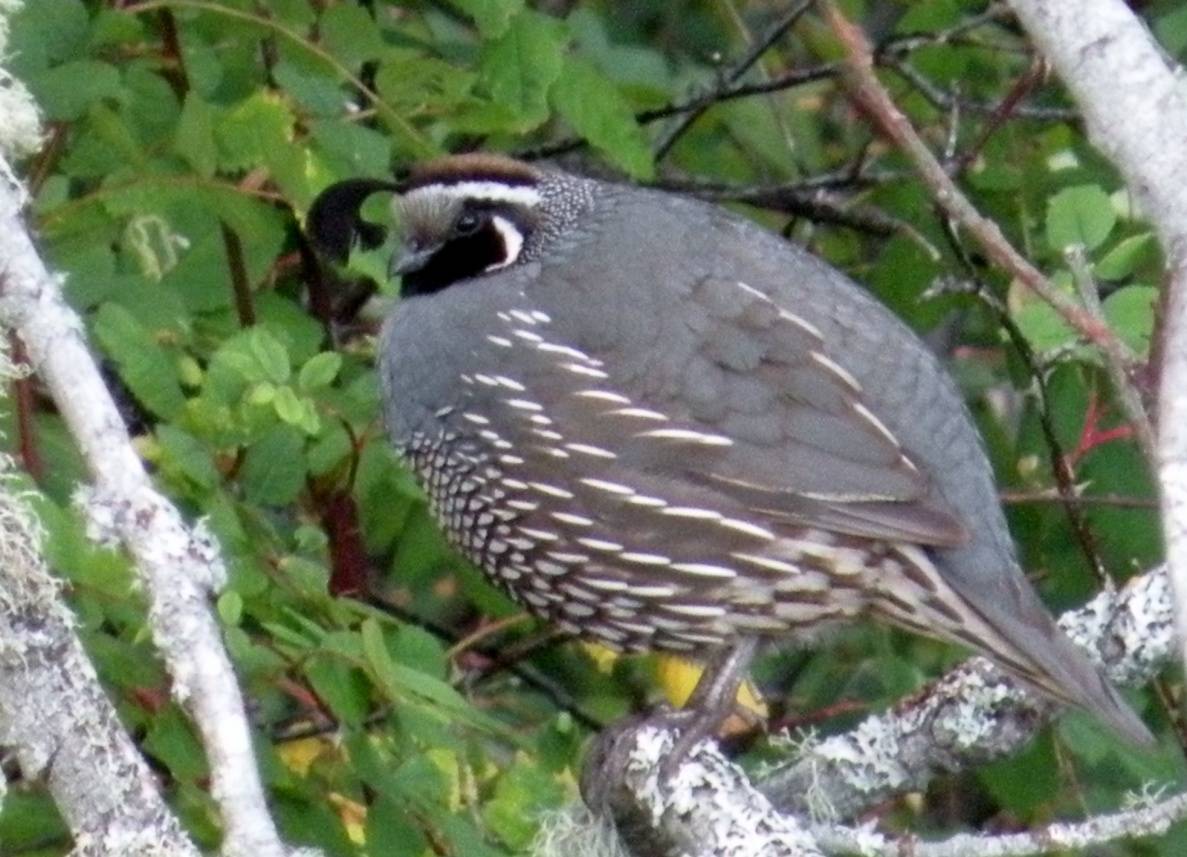By Peggy Butler
Special to the Journal
Perhaps we underestimate the celebration of fathers. I’m sure it occurs in places we don’t notice – even in common places, such as in the nest of the ordinary California quail, for instance. Or more accurately, even before the nest.
Out for my morning walk one May day, I noticed one of those face-painted, be-plumed male quails meandering in the grass. He seemed to just be standing around with his head in the clouds. But wait … barely visible through binoculars, another quail was feeding close by. She was so well camouflaged as to be nearly invisible. She was busy greedily eating, her head low, foraging among the small seeds and grasses on the ground. She never bothered to look up but scoured the area in her frenzy to eat, eat, eat.
He, however, strutted nearby in a slow deliberate way – for all the world like a soldier on watch. With his boldly striped warrior face held high, he scanned for danger while she fed –without taking even a single grain for himself. The female’s rather dull looking plumage in tan and gray belies her secret power; this prized and pampered “chick”– as in sweetheart – was likely building a new quail egg. It turns out that making quail eggs consumes energy and demands focus – for both mom and pop. Say what you will, but there are times when a lady quail appreciates a protective macho attitude.
Think of the foxes, the cats, the dogs off leash, the raccoons, the eagles and man! (As Bambi’s mother pointed out). Quails are, after all, a game bird. Meaning they do end up on the menu of five-star restaurants.
Too vigilant to eat much during this critical period of female egg building and nesting, the male or “roo” as he is sometimes called, will lose weight. While, with the extra requirements of motherhood, umm, added, bulk – she is not so fleet as before. A lady quail lays an average of a dozen eggs. Yep. She’s eating for 13. Some nests have almost 30 eggs. Hopefully this would be a communal nest where other hens, perhaps those without a protective male, have “dumped” their own eggs.
All spring and summer the survival of the eggs, which magically become baby quail, depends on the roo’s manly characteristics. The hen will not survive to brood them without his help. The female chooses her mate carefully. His macho qualities attract her. She notes the confident strut, the loud call, and the bold coloration of her mate as evidence that he can protect her in her “eggs-stremities.” Their partnership must defend the coming young, who will first see the world from a small nest on the ground, hidden in the brush.
Without the “roo” there will be no fuzzy little quail chicks. They may not even get as far as an egg. With both a male and female quail, there will be a new generation. Less than fifty percent of the hatchlings will survive the first year, and one study showed a 78 percent mortality rate. In five years, with luck, perhaps one out of thousands will live to build another generation.
One of the most delightful serendipitous moments in early summer is when you unexpectedly flush out a whole posse of baby quail running in a disorderly fashion, their necks stretched out and their little wheels whirring. Father “roo” and mother both herd the little chicks – mother leading in front while the chicks desperately rush to keep up. Father Quail follows as the tail guard. Quickly the whole family careens into the brush.
The newly hatched chicks can leave the nest within a day to forage beside their parents. Typically the father perches on a branch above the gleaning family to keep watch, or patrols along side them while they feed.
At night they return to the nest where the hen gathers them under her warm breast to brood them, and the “roo” continues his vigil, hungry, sleepless. Macho to the last. Happy Father’s Day little “roo,” you deserve it!



